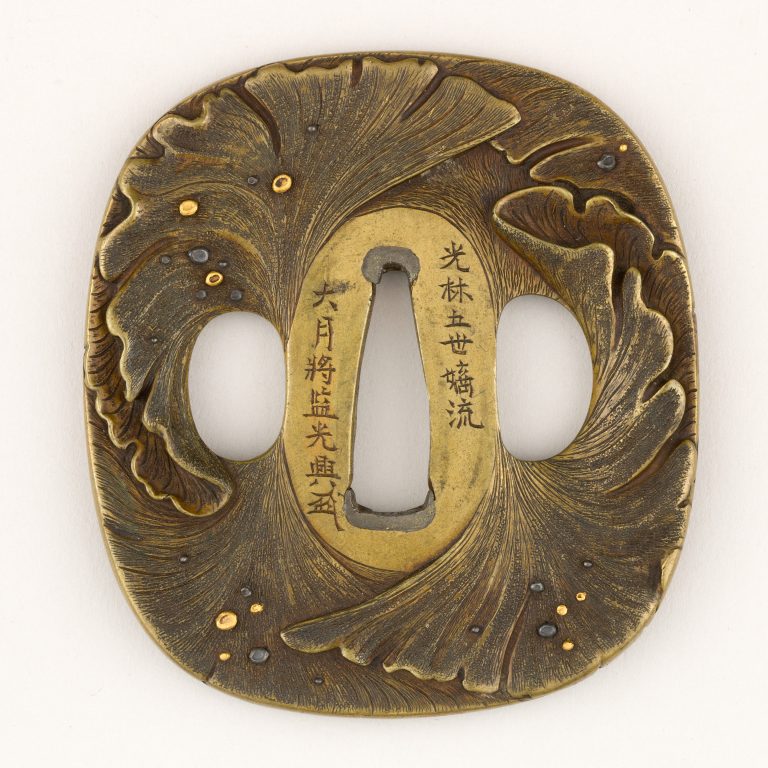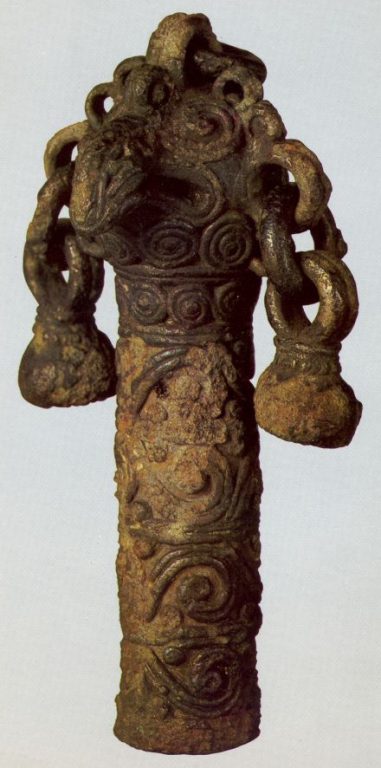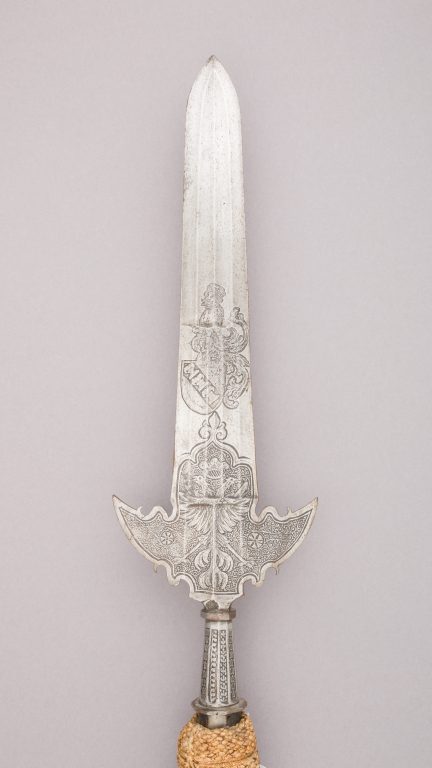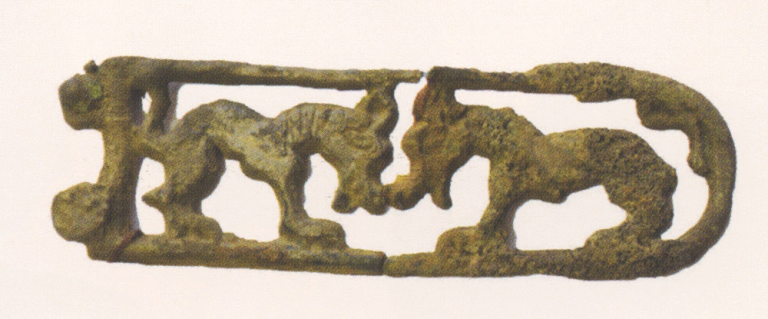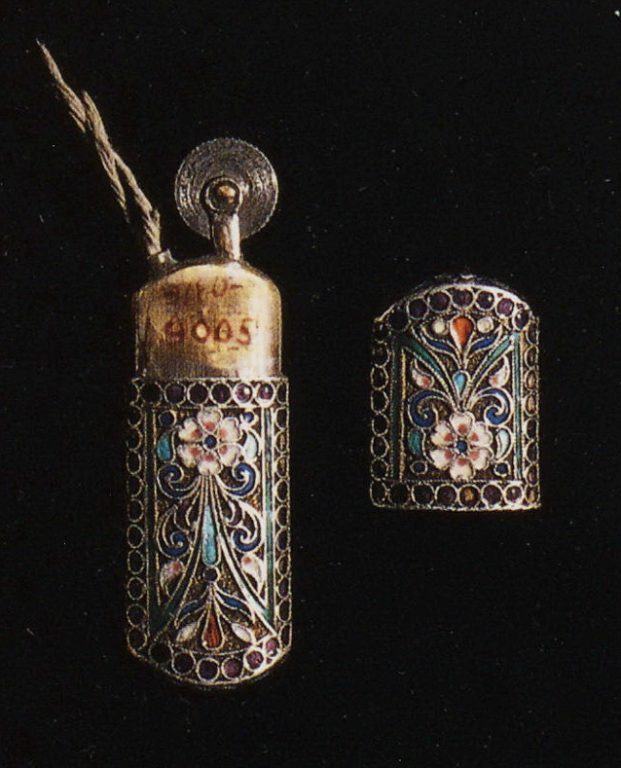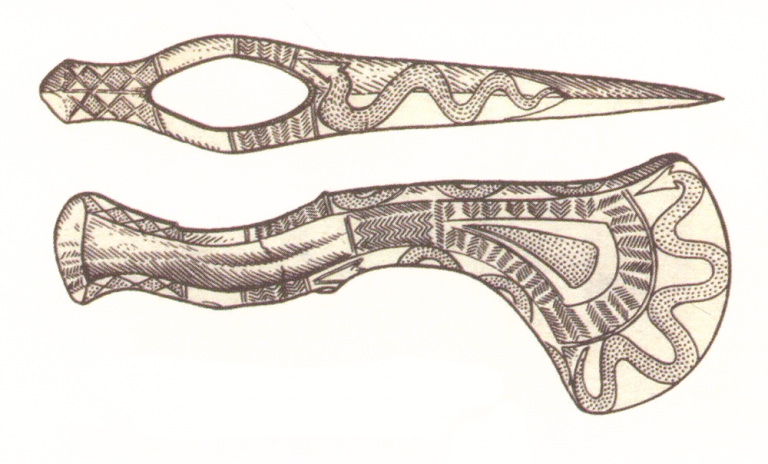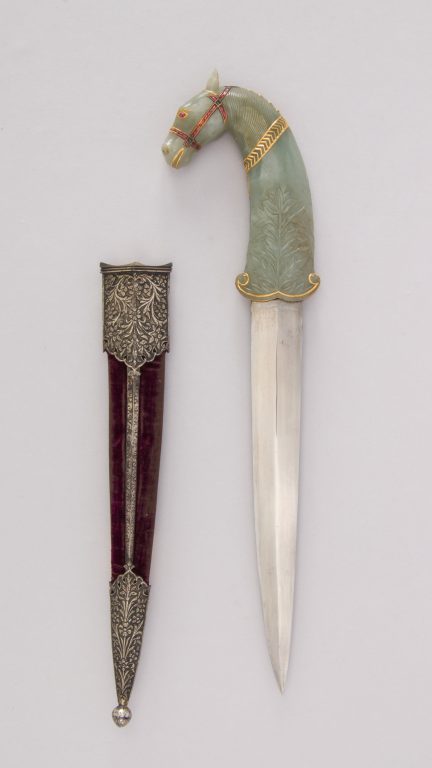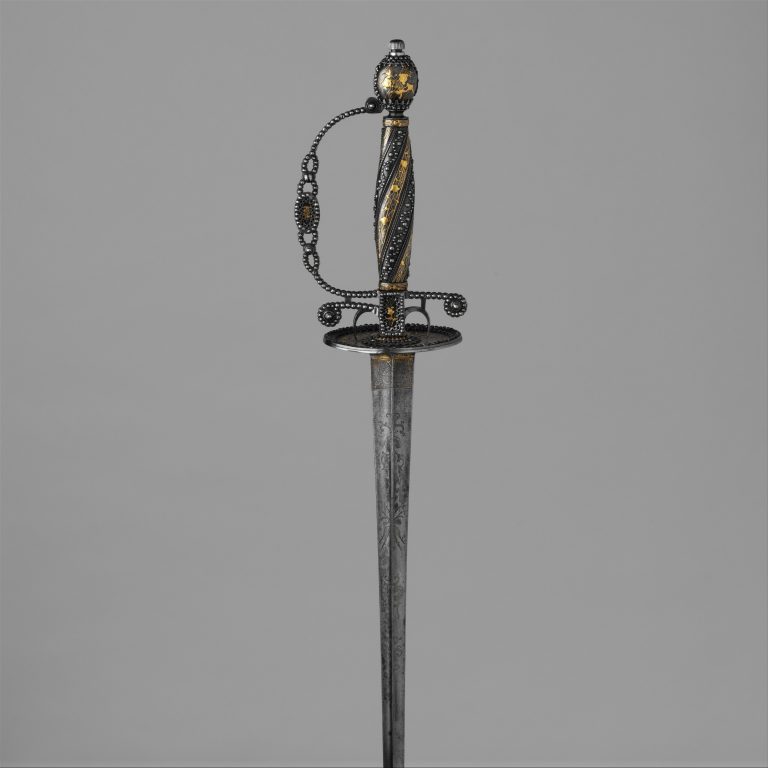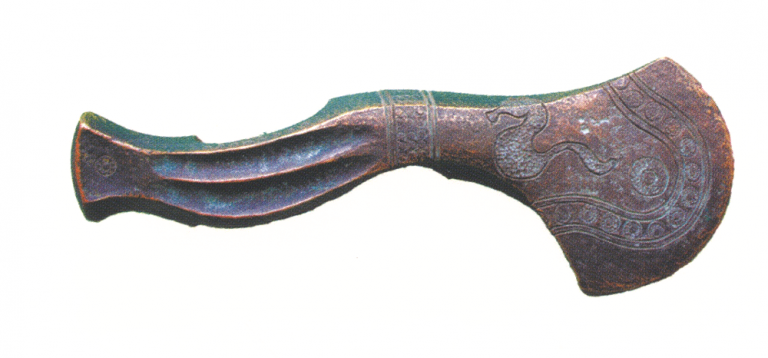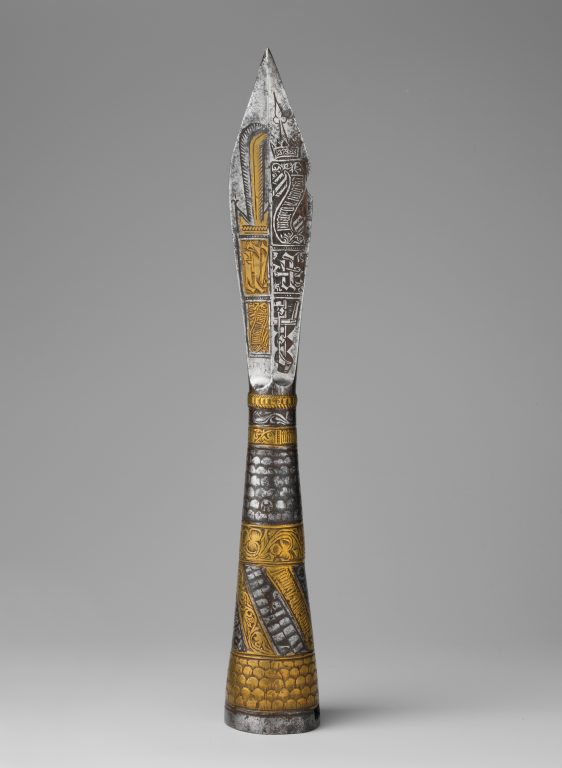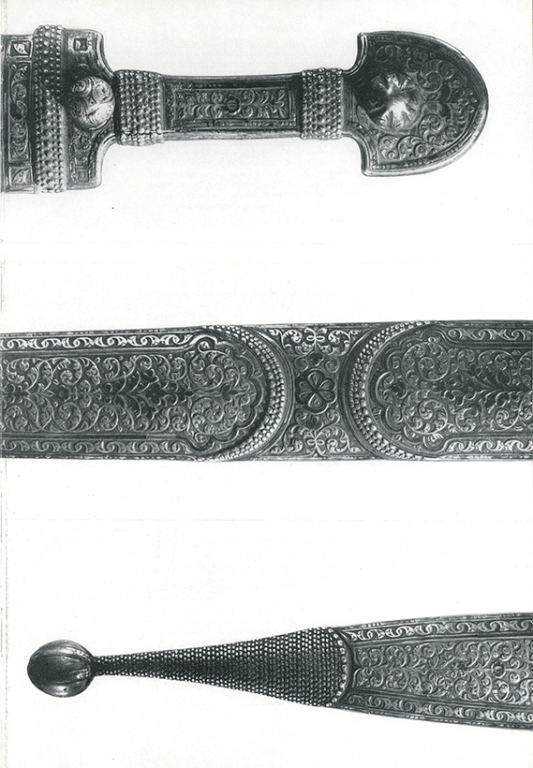

-
Objectweapon: Sword guard (Tsuba)
-
Type of arts & crafts
-
MediumCopper alloy (sentoku), gold, copper-silver alloy (shibuichi)
-
SizeH. 2 7/8 in. (7.3 cm); W. 2 5/8 in. (6.7 cm); thickness 1/4 in. (0.6 cm); Wt. 4.6 oz. (130.4 g)
-
Geography detailsCountry of Origin
Japan -
Country today
-
Dateca. 1780-1830
-
CultureJapanese
-
Type of sourceDatabase “Metropolitan Museum of Art”
-
Fund that the source refers toMetropolitan Museum of Art
-
Both sides of this tsuba are interpreted in relief, depicting in a dynamic manner overlapping gingko leaves with dew drops highlighted in gold and shibuichi.
Mitsuoki (光興), real name Ōtsuki Kihachirō (大月喜八郎), later Ōtsuki Gozaemon (大月五左衛門), was born in Meiwa three (明和, 1766) as son of the third Kyōto-based Ōtsuki master Mitsuyoshi (光芳, 1747-1816). Thus, he is traditionally counted as fourth generation Ōtsuki and so his statement of him being the fifth generation Kōrin (光林, which was the art name of the founder of the school) needs further research. In any case, Mitsuoki was the most artist of the school. He studied painting with the Maruyama School masters Ganku (岸駒, 1749/1756-1838) and Nagazawa Rosetsu (長沢蘆雪, 1754-1799) in Edo and established his workshop Yamashiro’ya (山城屋) after his return to Kyōto around the age of 50. It is said that up to his death in Tenpō five (天保, 1834), he had trained more than twenty sword fitting makers.


